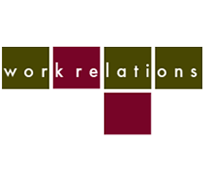Coronavirus: why you need fast and flexible planning for your workforce
The workplace is in turmoil as it responds to the ramifications of Coronavirus. In this environment it is more important than ever to PLAN. When I say plan, I mean not to prepare for what you want to happen, but what is happening. If you know your plan and are comfortable that you have worked through all scenarios, then you are in a position to consult your stakeholders. Remember, it is a failed plan if you haven’t tested it with your most important stakeholders – your employees. To get the best outcomes for the business and your workers, you must be willing to receive their feedback.
Employees are feeling very vulnerable and strong leadership and consultation will make them feel more secure in these most insecure and unplanned for times. At the end of the day, what you want to do, is to protect the business and employees as much as you possibly can.
What your plan needs to address:
- Overview
This is an overview of your business, your people, and how the impacts are being felt. This should include how things may change as the problem develops. For example, as the situation develops what will the worsening impacts be? Be frank in this assessment as it is better that everyone understands the full story, now. I often say to my clients, “if you don’t tell your story no-one, including the employees, will know the story.” Depending on your workplace this story probably includes the likelihood of stand down. Most importantly everyone needs to understand what the expectations are around workloads and trading.
- Government considerations
Australian Government Department of Health is providing daily updates. This includes the number of cases, advice for public gatherings and interaction with vulnerable groups, travel bans and information for the health and aged sector.
- Workplace Health and Safety
A rigorous approach to workplace health and safety is essential and will require significant adjustment. For guidelines on your obligations and how to manage the risks, refer to Safe Work Australia.
- Different models for temporarily restructuring the workplace
You should be exploring every and any rostering option available to keep trading. Where these options cut across the prevailing industrial instruments, consideration needs to be given to how these can be implemented without being in breach. Any possible solution is a better outcome than a stand down situation.
- Stand Down
Traditionally stand down has been considered in the context of a full shut down of the business. The Law says a stand down on no pay can occur where an employee cannot be usefully employed.
However, we are in uncharted territory and I am encouraging my clients to put all options on the table. These include partial stand downs and rotating stand downs. An example of what this would look like includes standing down half the workforce for a week whilst the other half works – and continuing this system on a rotational basis whilst the business can.
- Consultation and communication are crucial
Consultation with employees and trade unions is something that many businesses shy away from. I believe it is the key to creating a robust and secure workplace. If you are not already doing it, this crisis presents the opportunity to test the consultation model. All of my dealings with the trade union movement about this crisis, have highlighted their total understanding of the problem, and a willingness to work with business to ensure their members can remain in paid work for as long as possible.
In this instance I like to call it speed consultation, as time is of the essence and you will need to quickly reshape your plan as you take the learnings on board.
I believe this crisis has presented employers with the opportunity to change their approach to Industrial Relations. Strong leadership, planning, consultation with employees and the ability to respond with agility will be rewarded in the long term.

